The first I heard of Thypoch was when they got in touch with me about the loan of the subject of this article, the brand new (announced today) Thypoch Eureka 50mm f/2. I like to think I have my ear to the ground when it comes to new lens manufacturers, but this one passed me by. I’m pleased they got in touch though – I like this lens a lot, not least because it’s been a little bit of a reminder how much I enjoy my rangefinder cameras which have otherwise sat untouched for a little while now.
By some coincidence, and perhaps a touch of Bader Mienhoff phenomenon, the day Thypoch got in touch, Vincent Bihler also got in touch with me to say that he had uploaded a review of their 35mm Simera lens. This lens, alongside their 28mm Simera were their first, and as I’ve said completely passed me by. Looking at those two lenses, how they are designed, how they work, etc, it surprises me that I wasn’t aware of them. Vincent has the opinion that optically they’re great, but he isn’t totally convinced by the mechanical design. Obviously he’s handled them and I haven’t, but they look really interesting to me. With the depth of field scale that uses little dots visible through holes, the fact they close focus, and have a click stop at 0.7m for rangefinder users, they just have some slightly more interesting design features and details that make them standout from a lot of the other brands that are making m-mount lenses in China. The optics sound interesting too.
Actually, none of these specific design features have carried over from the Simera lenses to the Eureka 50mm f/2. Something of a design ethos to create a lens that’s less conventional has though. Both the mechanical design and optical formula aren’t conventionally modern. In fact, both seem to take cues from vintage lenses. The mechanical design definitely does. Of course, we’ve seen this before in Chinese lenses the form of the TTArtisan 28mm 5.6, not to mention the well regarded work by Light Lens Lab. Those examples have taken cues from Leica though – which sometimes seems a little obvious to me. The Eureka 50mm f/2 takes its mechanical inspiration from a Taylor Hobbs 50mm f/2 collapsible lens which feels a lot less obvious and so gives the lens a design feel that feels a little more unusual. Of course, a copy is still a copy and that might cause some to raise an eyebrow. (If you want to see a photo of the Taylor Hobbs lens, have a look here).
Eureka 50mm f/2 Mechanics & Handling
Copy or not, the Eureka 50mm f/2 a really nice bit of design. And as much as it looks the part, it feels it too. Being a collapsible lens, it also has something of an advantage in terms of its size. In fact, it’s far from the smallest collapsible lens I’ve seen when mounted on the camera, though it in its collapsed position it’s probably smaller than any conventional 50mm. Here you can see the Thypoch Eureka 50mm f/2, collapsed vs. extended
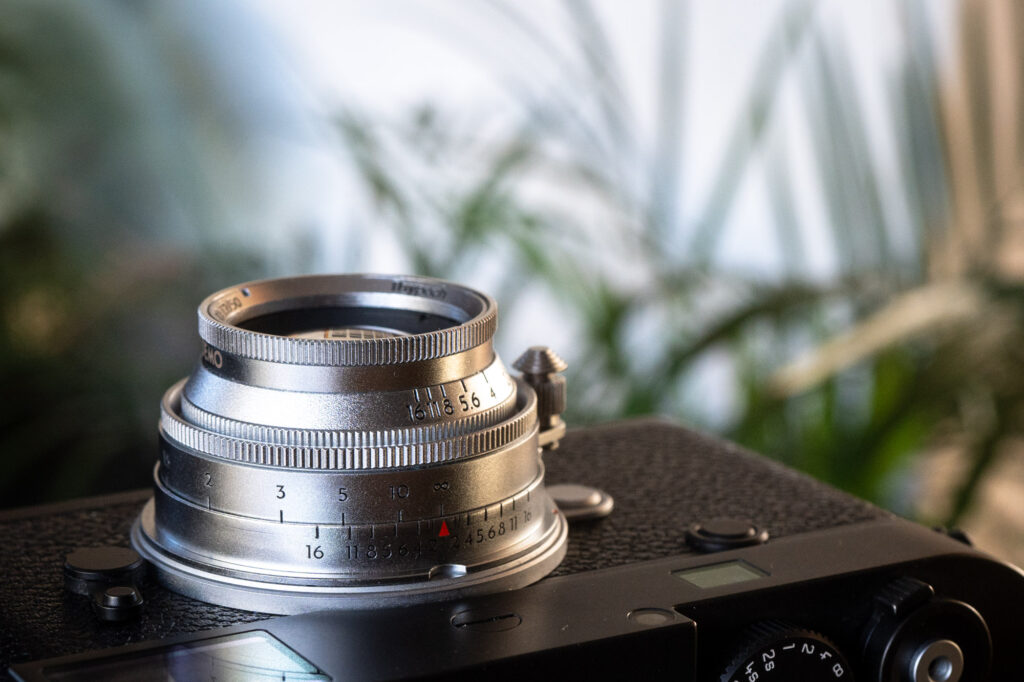
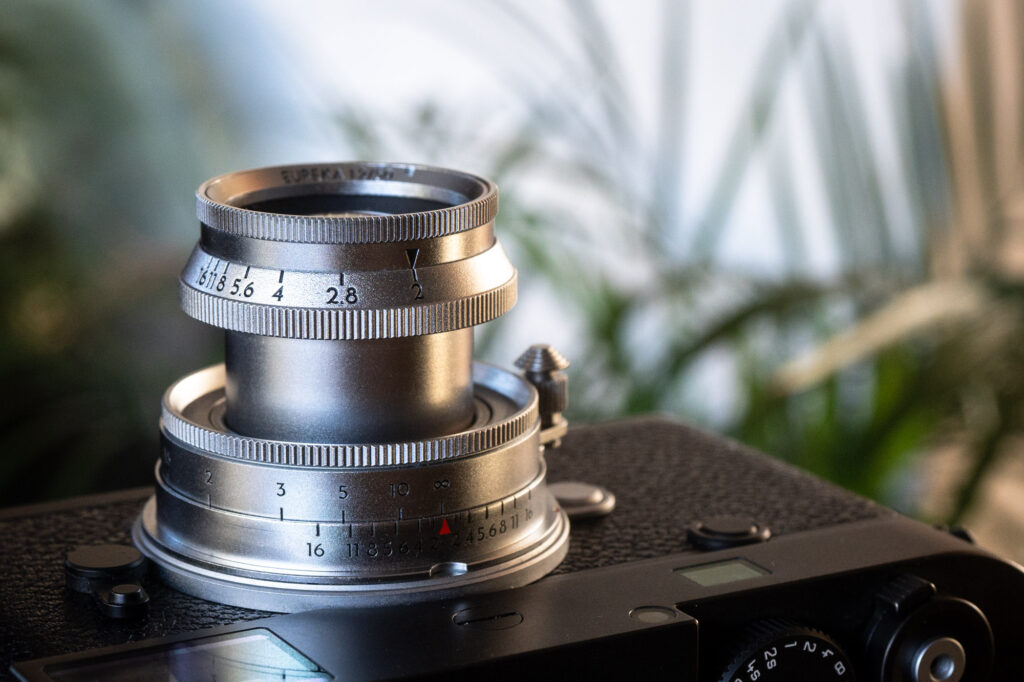
Extended, the Eureka 50mm f/2 is, obviously, just a normal size 50mm. Where its collapsible nature probably holds the most advantage is when it’s not mounted to the camera. Unlike some collapsible lenses that need unconventionally large rear caps, this lens fits a normal sized rear cap meaning it feels nice and small when stowed away in a pocket or whatever. At least it does without the hood, but I’ll come back to that particular accessory later.
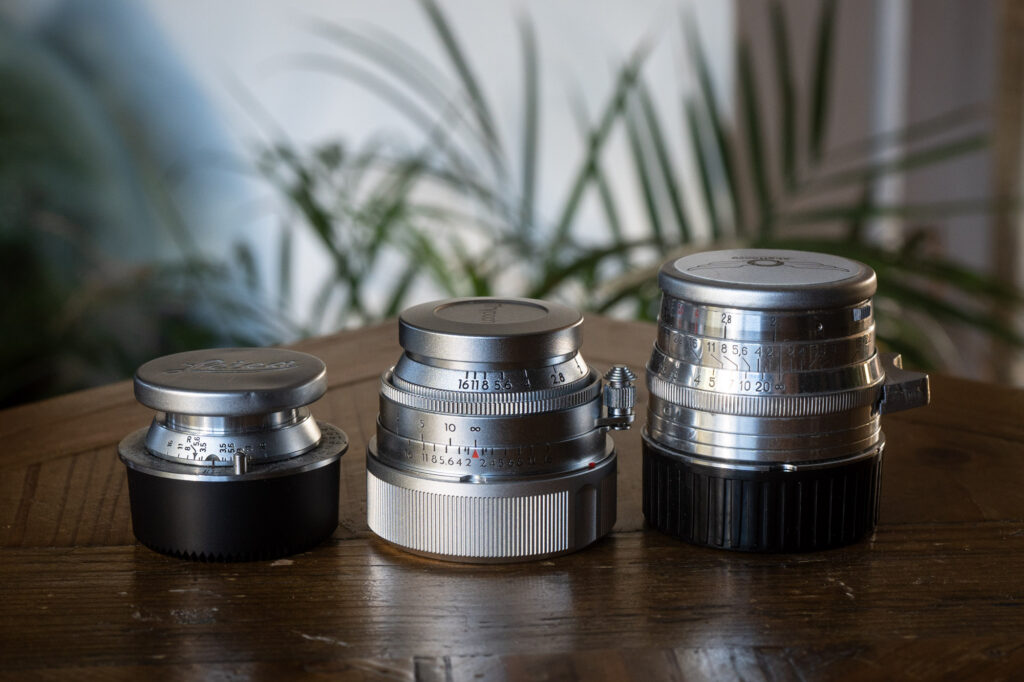
The version of the Eureka 50mm f/2 I have here also a fairly weighty little lens, which I’d guess means that at least some of it is made from brass – the RF cam is, for sure. The fit and finish is solid too. This feels particularly significant with it being a collapsible lens design. There’s nothing more off putting when these sorts of lenses feel loose and or wobbly when they’re in their collapsed position or being extended. Fortunately, that’s not the case with the Eureka 50mm f/2 lens. Collapsed, the front part of the lens feels snuggly located into the rear part with little wobble or feeling of looseness. Extending the lens feels smooth too, as does rotating and locking it into its extended position.
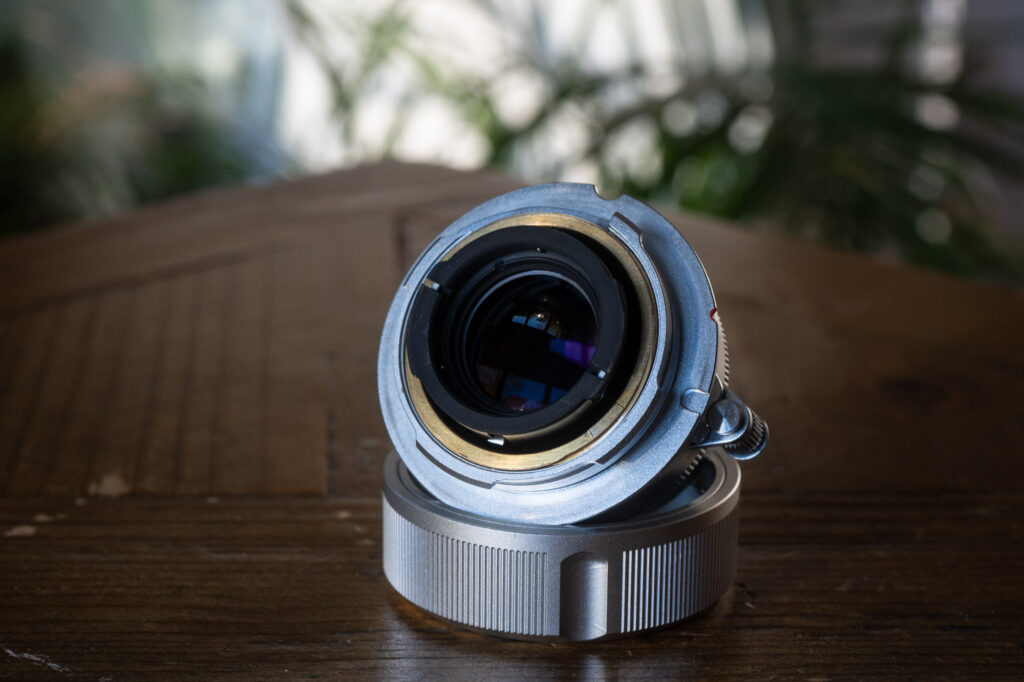
Once the front part is locked into place, the lens is ready to shoot. Focusing the Eureka 50mm f/2 doesn’t rotate the front part of the lens as on some older designs meaning the aperture readout always faces up. The feel of focusing the lens is nice and smooth too. It’s not Leica smooth, but it’s nice – there’s little to no mechanical roughness to the feel.
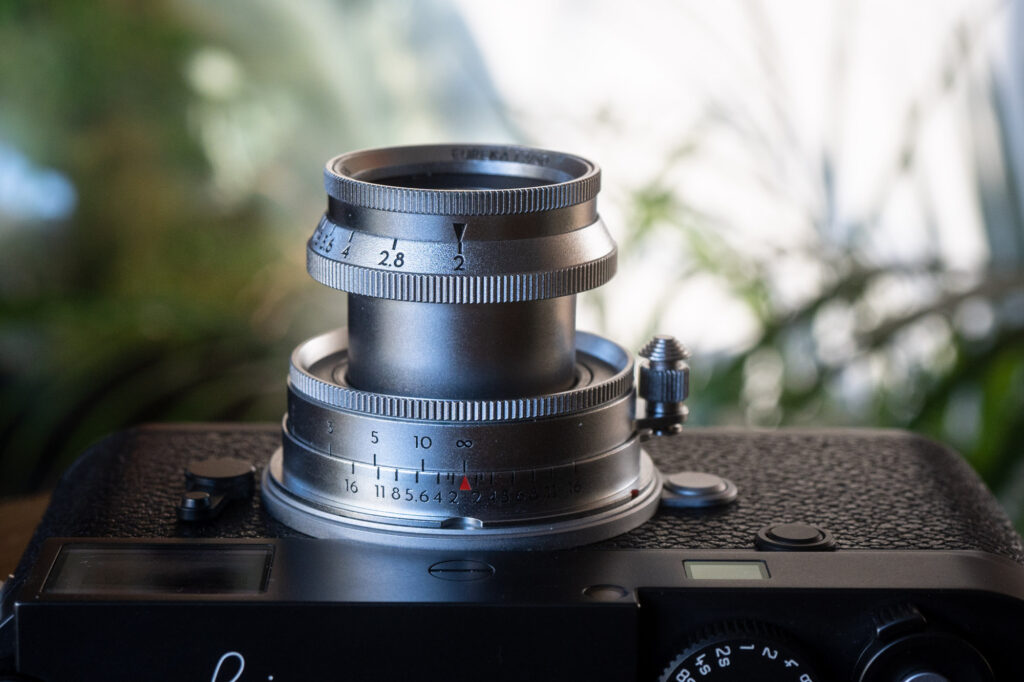
The action of focusing might not be for everyone though. They’ve recreated the old infinity lock knob which really has to be used to focus the lens comfortably. The focus grip is very thin and doesn’t feel great to grip to focus with. With it locking at infinity it also makes sense to be holding the focus lock so as to be able to focus to, and away from infinity without the bump of the lock engaging, if that makes sense…? This to me is the main issue with older lens direct, or close-to-direct copies – it makes more sense to me to bring subtle changes to them to make them more widely useable by people with different tastes. A non-locking or perhaps switchable-locking focus knob and a slightly bigger focus grip could have updated this design without it impacting too much on the aesthetic. With that said, personally, I have no issue using the a focus knob like this at all, it’s just that some other people do and will be put off this lens because of this design choice.
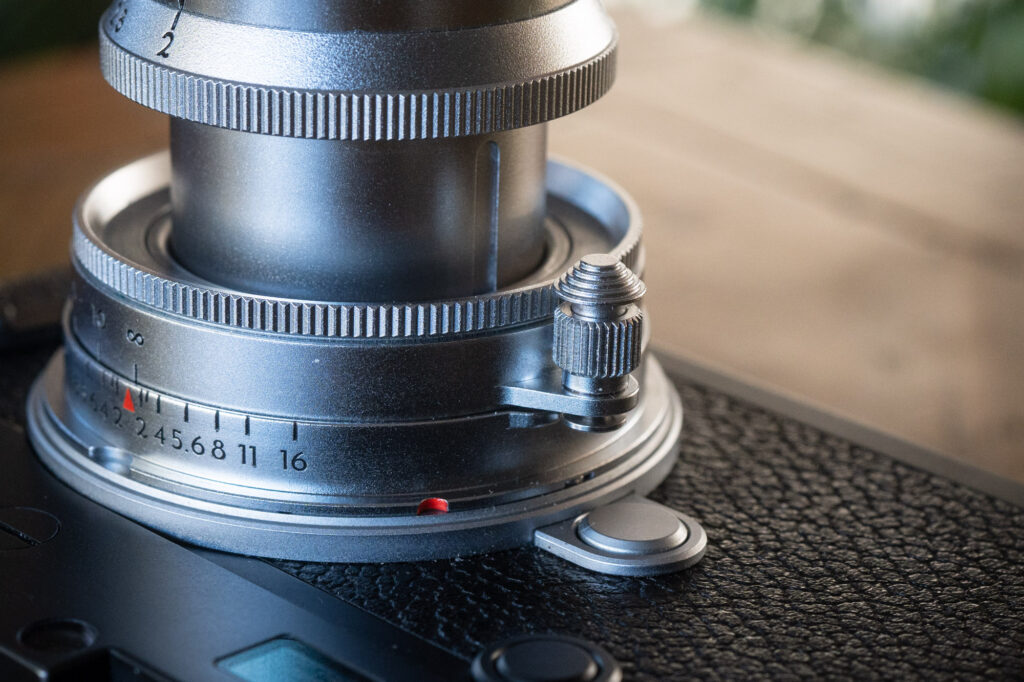
The aperture scale is also nice and smooth. It’s not clicked, and has uneven spacing which again might bother some people, but doesn’t really phase me. The only issue I found is that because the aperture control is so big at the front of the lens it’s quite easy to knock and change unintentionally.
The Eureka 50mm f/2 also comes with a series of metal accessories including a rear cap, front cap, hood and UV filter. The design of the front of the lens doesn’t have a filter thread so the cap is a push-on one and the hood and filter are both clamp-on with knurled tightening screws. I like them, they feel esoteric and of course are true to the original Taylor Hobbs (correction – see comments:) Taylor-Hobson design which also didn’t have a filter thread. Again though, this to me feels like an area that could have been updated. I just don’t really see the point in perfectly copying the original design when an update would have made the lens more useful and usable to people who people who, for example, like to use a range of different filters which there would be no way to mount. Here you can see the lens with the filter and hood mounted.
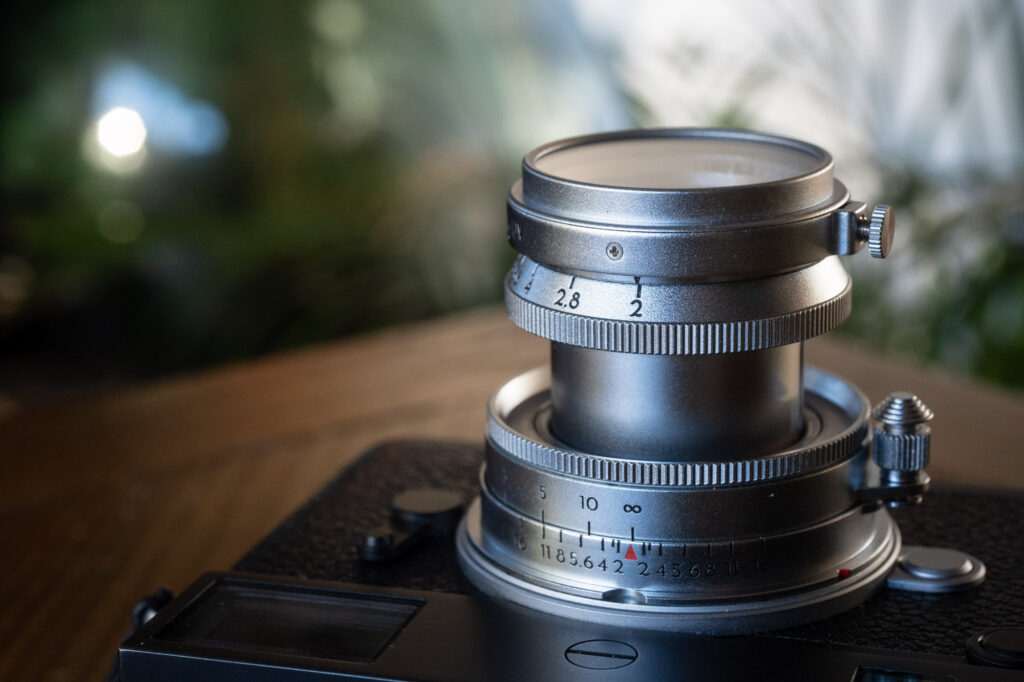
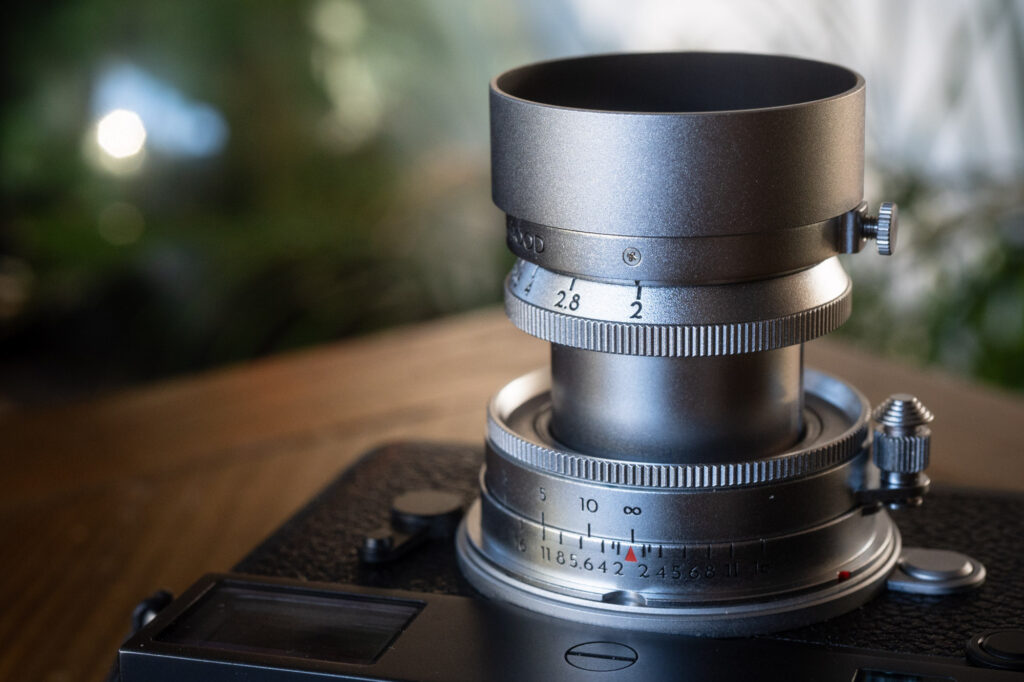
Overall though, whilst there’s some negatives here in terms of the mechanical design, I can’t help but like it myself. I just enjoy classic lenses I think, and though this is a copy, it being slightly unconventional just gave me an enjoyable overall user experience. Especially as nothing about it at all feels cheap or poorly made.
Eureka 50mm f/2 Optics
Optically, in my opinion, the Eureka 50mm f/2 is quite an interesting bit of kit too. I honestly didn’t know what to expect, but it didn’t take me long to decide that I liked what I saw, and this was mostly due to the fact that it’s clearly not designed to be an optically perfect lens. Being a fan of classic lenses, it appeals to me. Being even more a fan of modern lenses that use classic (imperfect) formulas but with modern coatings, this really appealed to me. I really love all of the lenses that come out of the Meyer Optik (OPC) factory for this very reason. Not to mention the Zeiss ZM Sonnar which remains a firm favourite for the same reasons. This Thypoch lens seems to be cut from a similar cloth too.

A lot of the lenses that come out of the Chinese brands feel like they have optical flaws that are almost just an accident or a byproduct of trying to do something unusual such as make a very fast lens, or a tilt lens, or whatever. I really hope I’m not giving the guys at Thypoch too much credit when I say this, but, I think the team there have actually designed in the optical flaws, or at least they have actively chosen the combination of optical compromises to give the lens a more interesting character.

Sharpness and pop
To begin with, the Eureka 50mm f/2 pretty sharp even wide open. I like a sharp f/2 lens. A maximum f/2 can feel like a compromise in itself in a world where 50mm f/1.2 and faster lenses are common place and very accessibly priced. An f/2 lens should be small. It is. But an f/2 lens should also be pretty sharp wide open. That said, you do need to stop down a couple of stops to get corner sharpness, but that’s not exactly unusual and hardly noticeable in most wide-open shooting circumstances anyway.


If you want to see these in closer detail have a look on flickr here. There is also a distance comparison between f/2 and f/8 starting here
With the sharpness – and probably due to modern coating and a relatively simple optical formula – comes a good bit of 3d pop too. Though I do think that’s aided by two other important factors. Those being the bokeh and a fairly heavy vignette.

Vignette
At f/2 the vignette is quite strong and impacts the image quite far into the frame. I find this really helps give a central-ish subject a bit of pop wide open. I like it! Especially as it’s dramatically reduced when even only slightly stopped down. Here’s a comparison of f/2 and f/8.
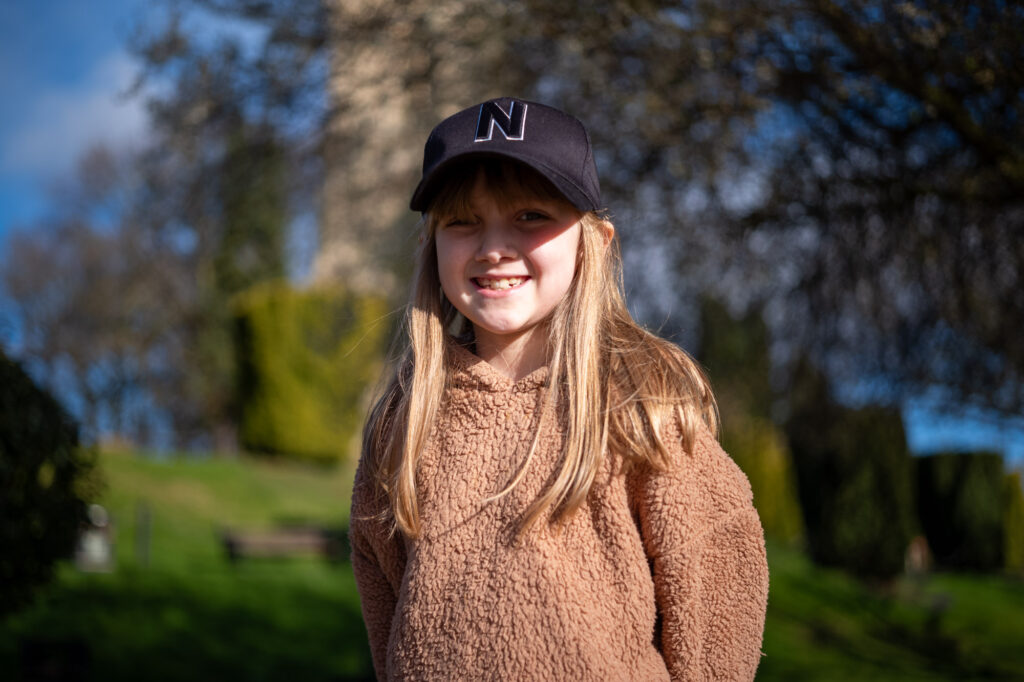
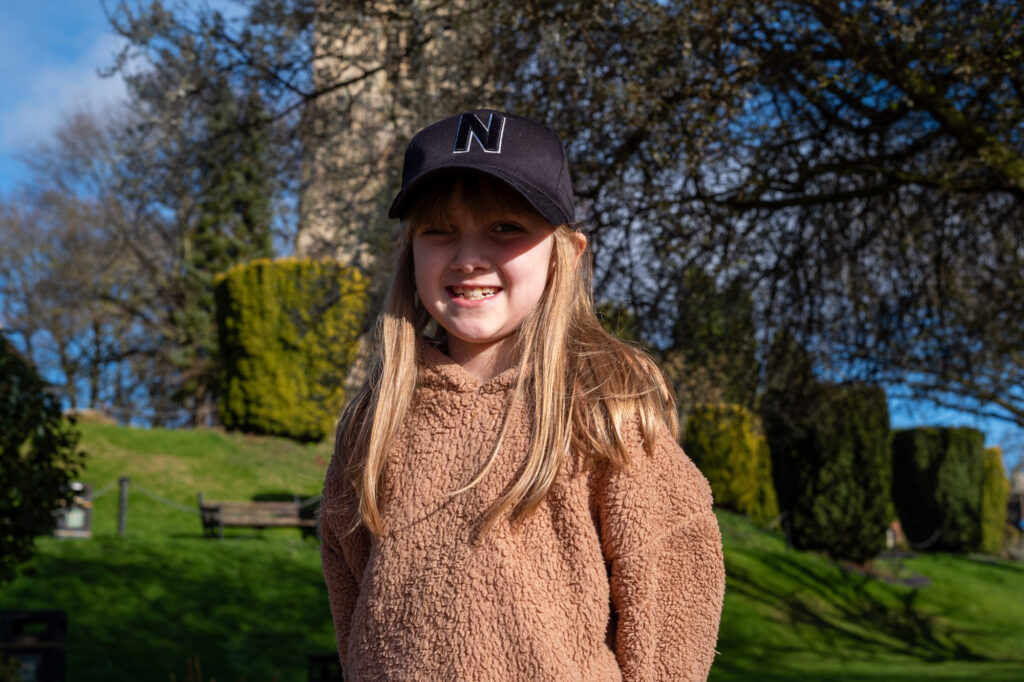
Bokeh
The Eureka 50mm f/2 bokeh also seems to be impacted by the vignette too. Wide open there’s something of a cat’s-eye shape to out of focus points of light that makes for a subtle swirling effect. Stopped down to f/2.8 it’s all but gone and definitely gone by f/4. Stopping down reduces the cat’s-eye effect, but thanks to a round iris at all f/stops there’s no angular shapes to the bokeh highlights. In fact, they render really nicely with only a slight halo at some distances. At close distances, the bokeh is really quite smooth. Here’s a comparison of f/2 and f/4 at close to 0.7m:
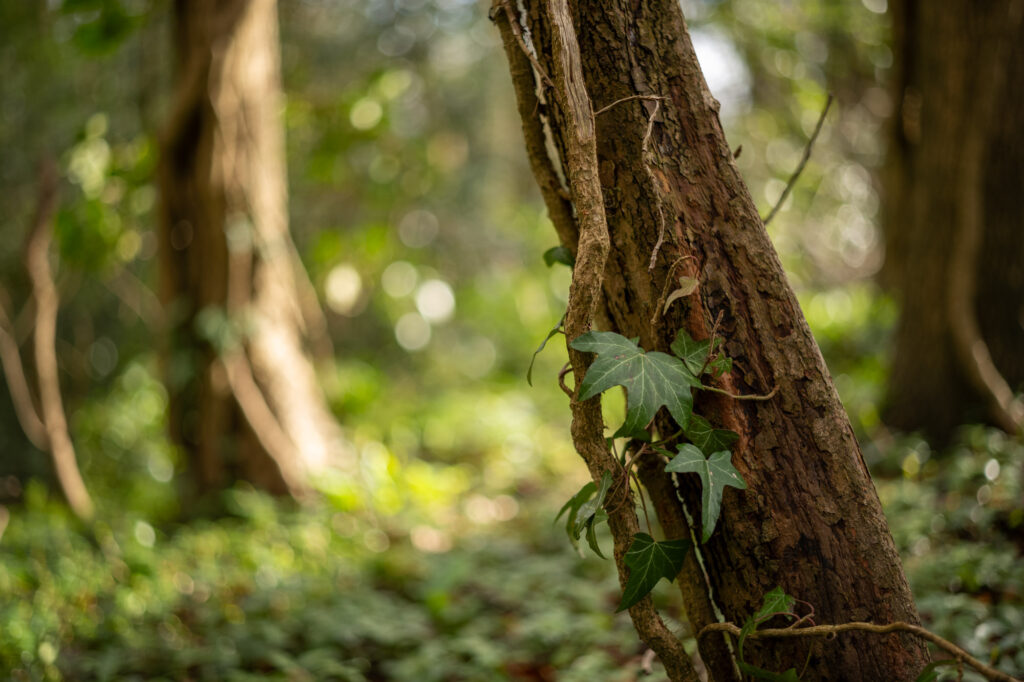
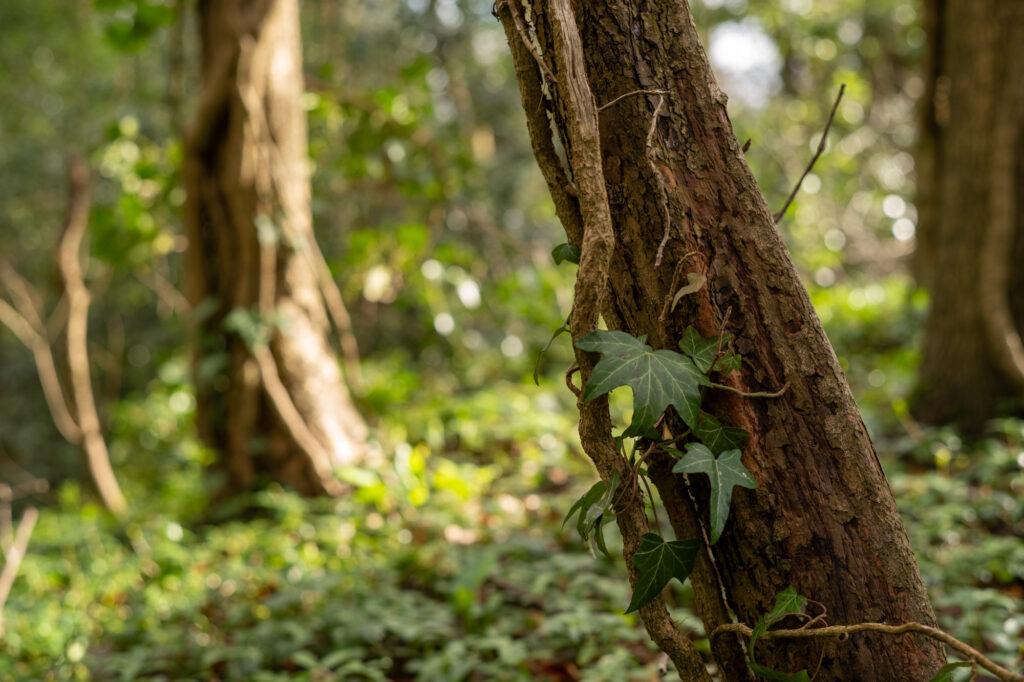
I also quite like the transition to out of focus which occasionally has a bit of a glow to it.

Flare
I have also been impressed by the Eureka 50mm f/2 flare resistance. I have had to point the lens into the sun at wider apertures to get it to flare, and even then for the most part it faired quite well. I managed to induce a chunk of veiling flare once or twice.
 I also achieved an occasional purple blob of ghosting, but largely speaking it behaved pretty well. I also didn’t use the hood in situations when I probably should have for best results, so it would probably fair even better if you’re fussy.
I also achieved an occasional purple blob of ghosting, but largely speaking it behaved pretty well. I also didn’t use the hood in situations when I probably should have for best results, so it would probably fair even better if you’re fussy.

I’m sure there’s more negative traits to be found with the Eureka 50mm f/2 if I went looking for them – I think, for eg, that there might be a tiny bit of pincushion distortion, but I’ve not attempted to prove or disprove that beyond pointing the camera at a picture frame (I didn’t take a photo, so I have nothing to show you). Optical compromises are just part of the deal when it comes to the more simple optical formulas required to make small lenses like this one. But, I personally haven’t spotted anything other than what I’ve outlined that I feel would impact on my photography. What I’ve mentioned above are the characteristics that I most commonly spot in my testing of lenses, and the only ones that I find matter in most of the shooting circumstances I shoot in, especially with a rangefinder camera. And the sum total of what I have found is a character that really appeals to me. There’s enough to feel like I have something that can be harnessed to make choosing this lens a genuine option, but not so much that there’s a specific or notably negative impact that I have to be conscious of working around. In fact, the character is arguably subtle enough to go unnoticed by many, I would imagine making for a great carry-everywhere option.
A few more photos









Lots more photos here too
Final thoughts on the Eureka 50mm f/2
I don’t know what gain there is in almost perfectly copying the mechanical design of a relatively unknown lens from the middle of last century. To my mind, the areas the Thypoch Eureka 50mm f/2 fall short are where the design has been to specifically copied. To my mind, there really is no reason not to make a couple of tweaks to modernise the design, especially as it could have been done without being really noticeable without looking closely. That’s the objective bit. Subjectively speaking, I really like this lens.
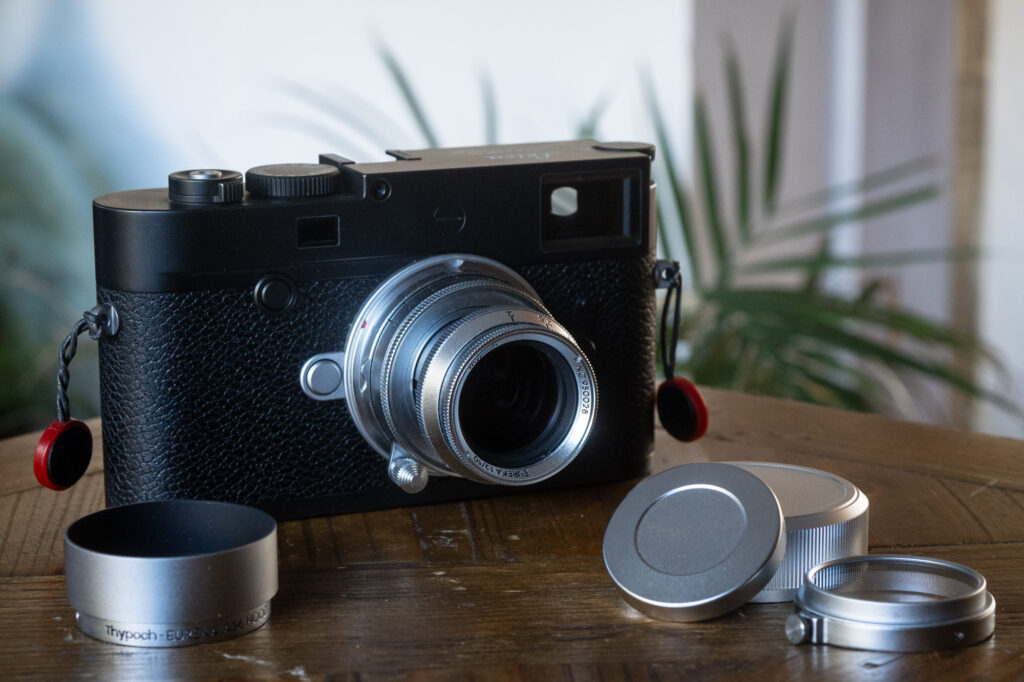
Now, I should add at this stage that the Eureka 50mm f/2 has pretty much single-handedly got me back into rangefinder photography after a fairly long break. I have really enjoyed shooting my M10-P again having not really used it in anger for nearly a year, I think. That has probably added to how much I have enjoyed this lens. That being said, I don’t think I would have enjoyed it were I to find fault with it that jarred against my personal user experience of it. I don’t mind any of the mechanical foibles that I have outlined, and even if I had, I think I still would have found overall favour based on how nice the lens feels to use. It’s smooth functioning, well made feeling, small (which I favour) and really looks the part on the Leica! And that’s before I even get to the optical qualities. Again, it’s not perfect, but what objective flaws it does have are so minor, and really, to my mind, largely speaking, have more of a positive impact on the photos anyway. In short, I am a fan. In fact, I think the Thypoch Eureka 50mm f/2 might just be my favourite Chinese brand lens to date. I shall be keeping my eye on Thypoch (now I have finally heard of them) and look forward to seeing what they do next!
More on their website here
Share this post:
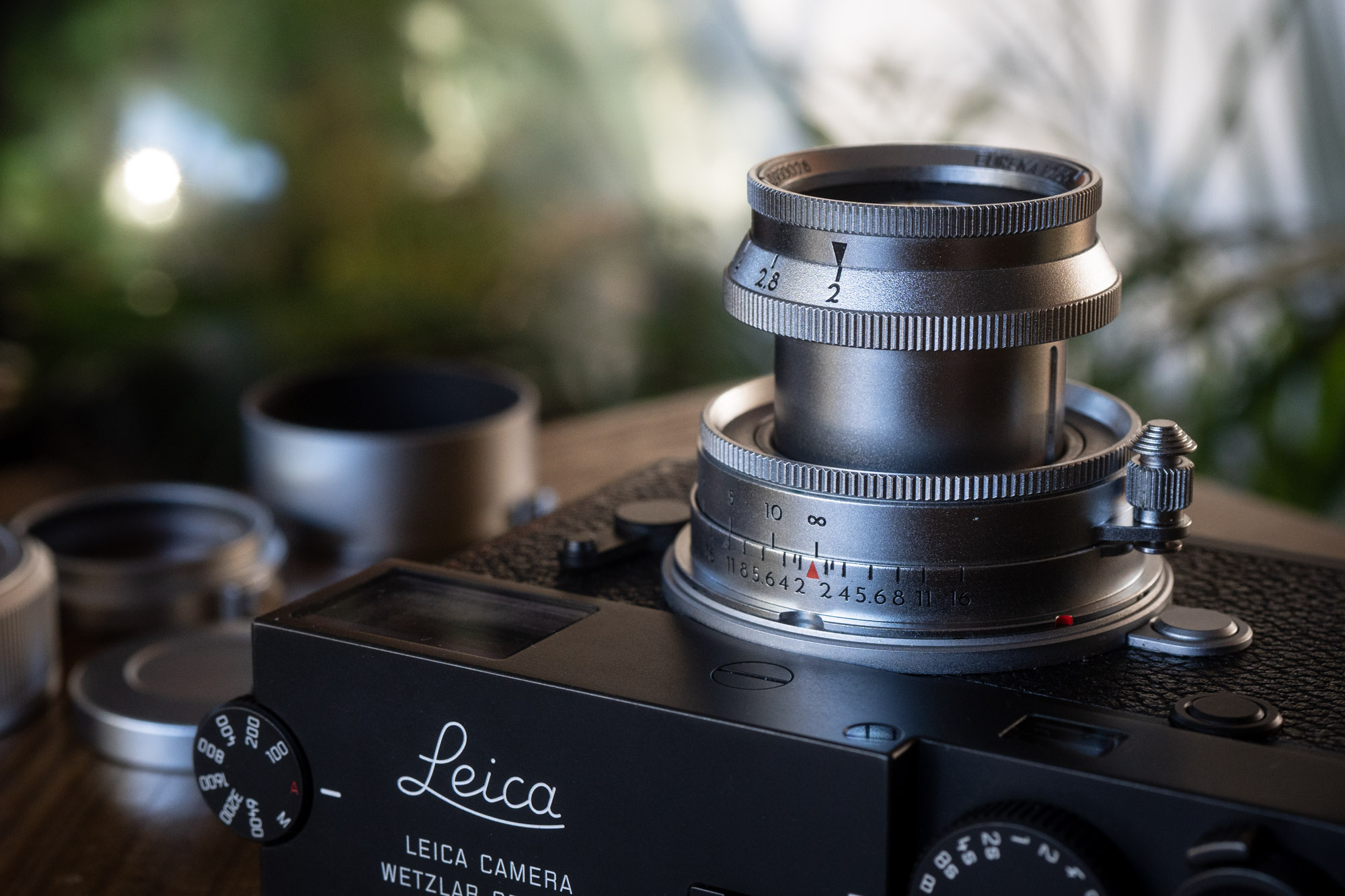
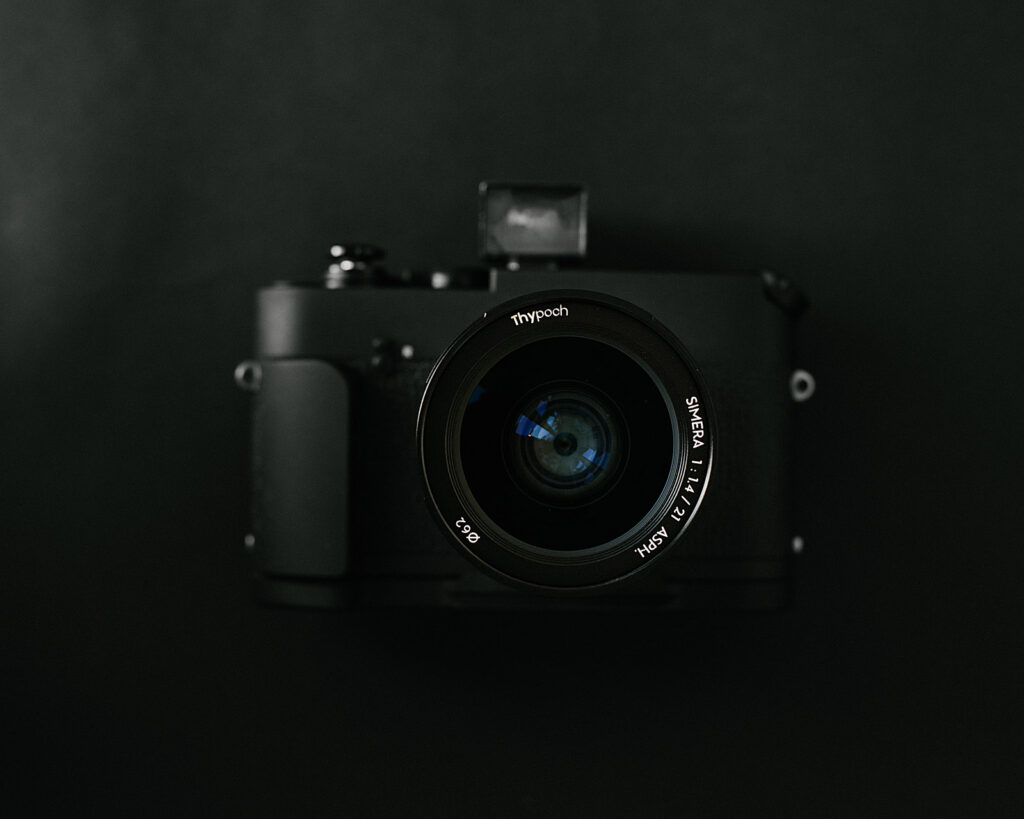
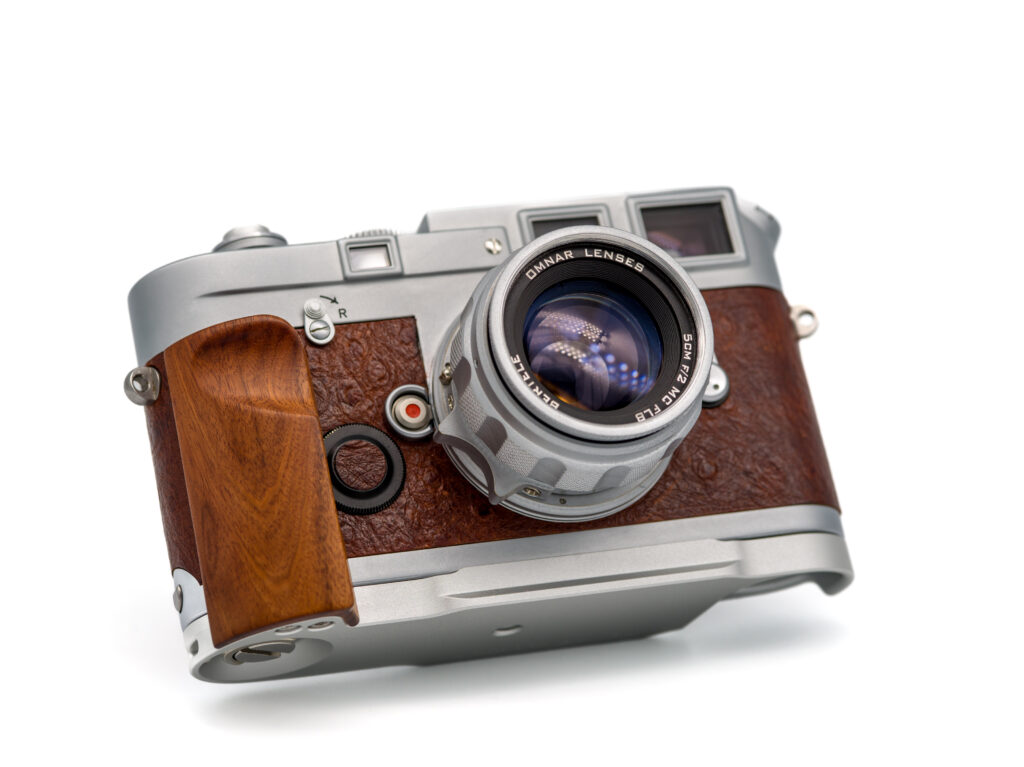
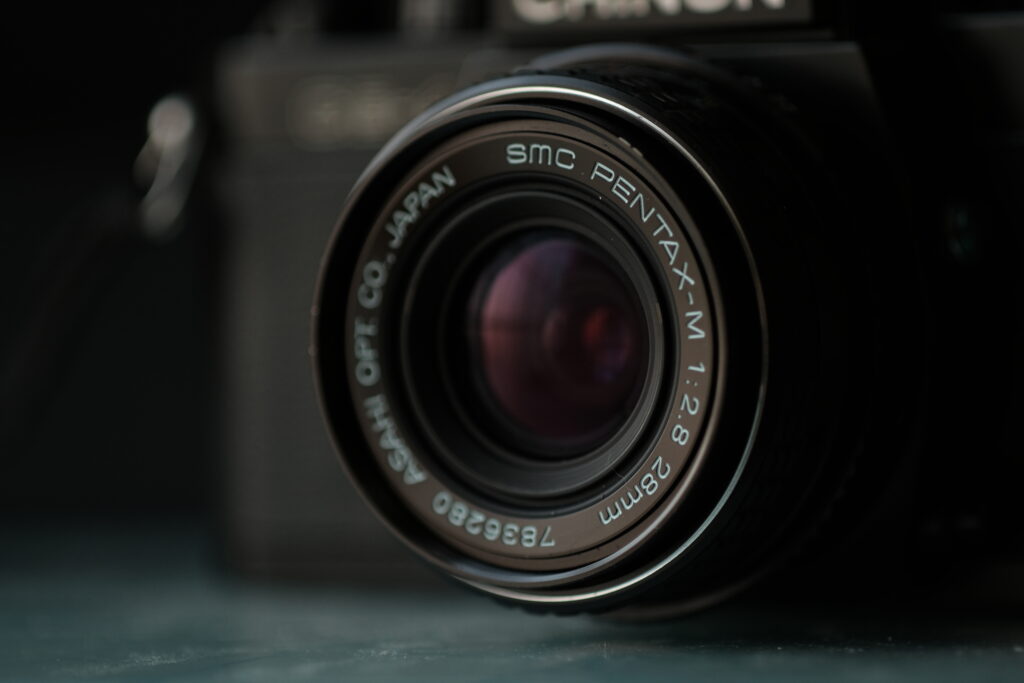
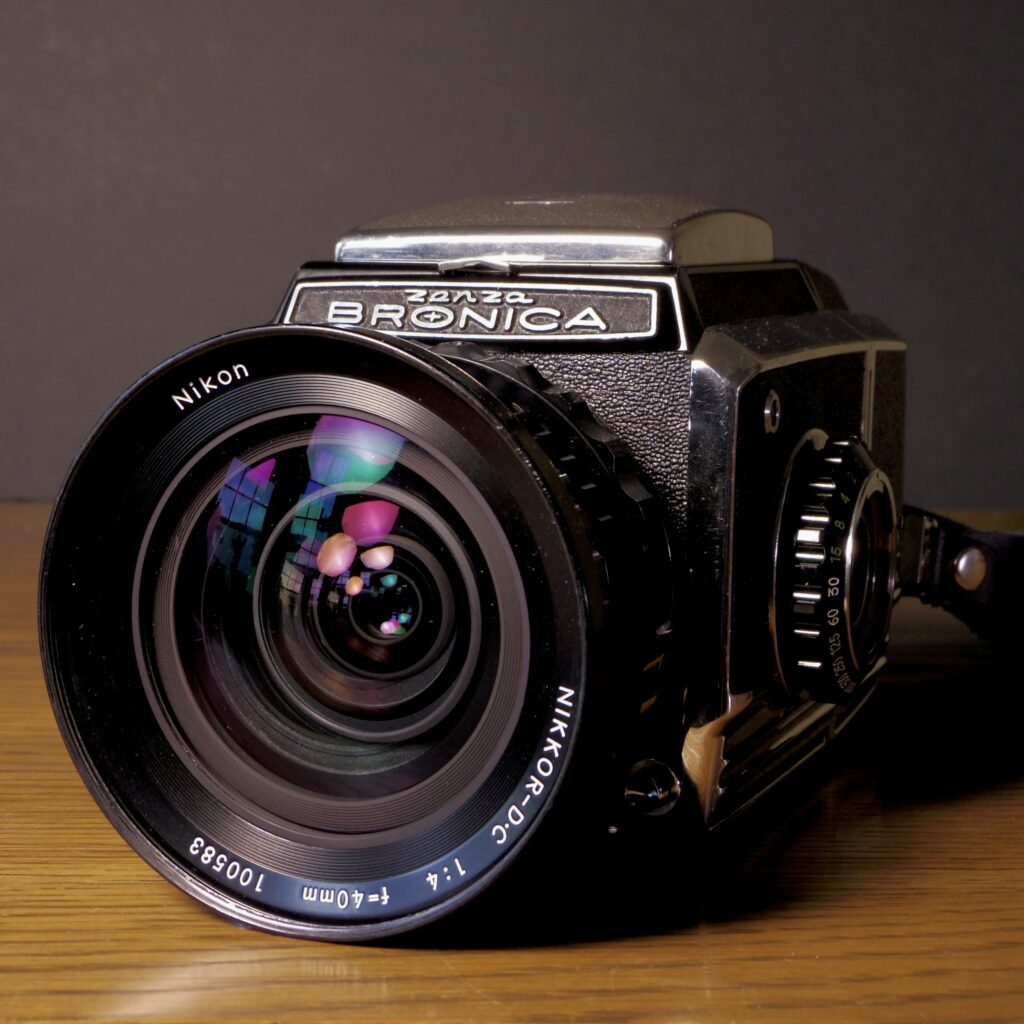




Comments
Klaus Döring on Thypoch Eureka 50mm f/2 M-Mount Lens Review
Comment posted: 24/05/2024
Thank you Klaus (Claudius)
Comment posted: 24/05/2024
vincentbihler on Thypoch Eureka 50mm f/2 M-Mount Lens Review
Comment posted: 24/05/2024
Comment posted: 24/05/2024
Gary Smith on Thypoch Eureka 50mm f/2 M-Mount Lens Review
Comment posted: 24/05/2024
Comment posted: 24/05/2024
Comment posted: 24/05/2024
Comment posted: 24/05/2024
Comment posted: 24/05/2024
Comment posted: 24/05/2024
Edward Stitt on Thypoch Eureka 50mm f/2 M-Mount Lens Review
Comment posted: 24/05/2024
Geoff Chaplin on Thypoch Eureka 50mm f/2 M-Mount Lens Review
Comment posted: 25/05/2024
Chris Chen on Thypoch Eureka 50mm f/2 M-Mount Lens Review
Comment posted: 26/05/2024
Chris Chen on Thypoch Eureka 50mm f/2 M-Mount Lens Review
Comment posted: 26/05/2024
Comment posted: 26/05/2024
Huss on Thypoch Eureka 50mm f/2 M-Mount Lens Review
Comment posted: 28/05/2024
I'm waiting on the new CV 50 2.2 Color Skopar.
Russ Rosener on Thypoch Eureka 50mm f/2 M-Mount Lens Review
Comment posted: 18/06/2024
I like the infinity lock and focus tab. It's great they are sticking to their vintage aesthetic and extending it to the user experience. Updating the mechanical function would be like putting an automatic transmission in a classic Porsche 356. I enjoyed your review and the photographs. Particularly the indoor portraits have a magical quality.
I am hoping to see some short telephoto lenses in the 75-100mm range from Thypoc soon.
Comment posted: 18/06/2024